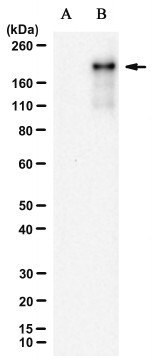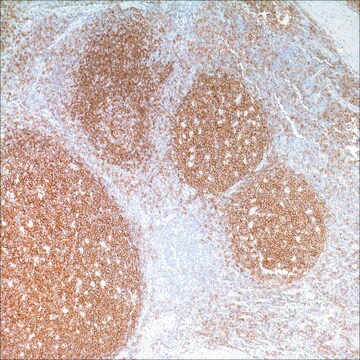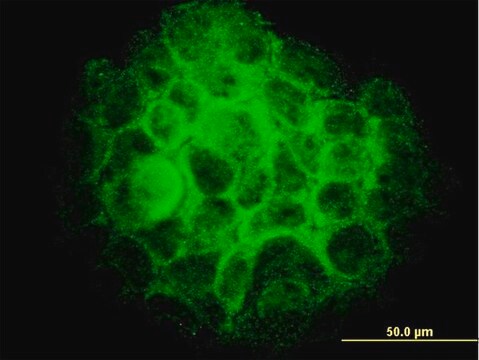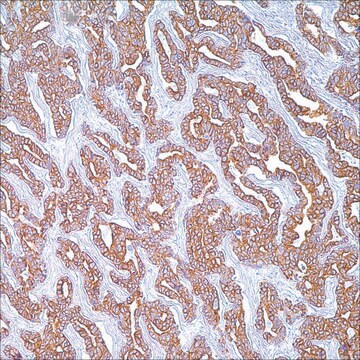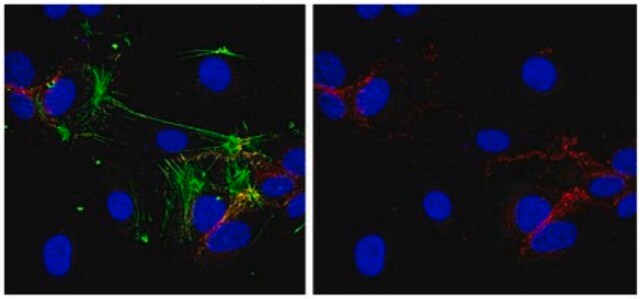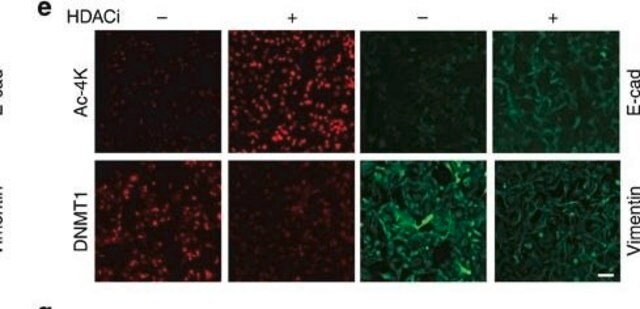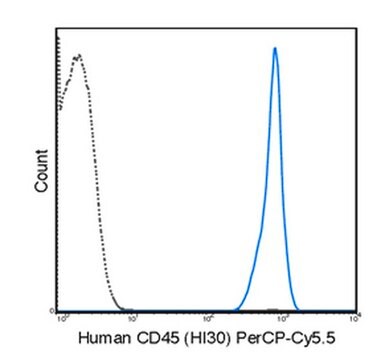ST1032
Anti-TRB3 (1-145) Rabbit pAb
liquid, Calbiochem®
Sign Into View Organizational & Contract Pricing
All Photos(1)
About This Item
UNSPSC Code:
12352203
NACRES:
NA.41
Recommended Products
biological source
rabbit
Quality Level
antibody form
serum
antibody product type
primary antibodies
clone
polyclonal
form
liquid
does not contain
preservative
species reactivity
rat, mouse, human
manufacturer/tradename
Calbiochem®
storage condition
OK to freeze
isotype
IgG
shipped in
wet ice
storage temp.
2-8°C
target post-translational modification
unmodified
Gene Information
human ... TRIB3(57761)
General description
Rabbit polyclonal antibdy supplied as undiluted serum that has been adsorbed against GST to remove GST-reactive antibodies. Recognizes the ~45 kDa TRB3 protein.
Recognizes the ~45 kDa TRB3 protein in HepG2 cells.
TRB3 is a protein that is reported to disrupt insulin signaling by binding directly to Akt and blocking activation of the kinase.
This Anti-TRB3 (1-145) Rabbit pAb is validated for use in Immunoblotting, Immunocytochemistry, Immunoprecipitation for the detection of TRB3 (1-145).
Immunogen
Mouse
a recombinant protein consisting of amino acids 1-145 of mouse TRB3, fused to GST
Application
Immunoblotting (1:2500)
Immunocytochemistry (1:2500)
Immunoprecipitation (1:250)
Immunocytochemistry (1:2500)
Immunoprecipitation (1:250)
Warning
Toxicity: Standard Handling (A)
Physical form
Undiluted serum.
Reconstitution
For long-term storage aliquot and freeze (-20°C). Avoid freeze/thaw cycles.
Analysis Note
Positive Control
HepG2 cells
HepG2 cells
Other Notes
Antibody should be titrated for optimal results in individual systems.
Du, K., et al. 2003. Science300, 1574.
Legal Information
CALBIOCHEM is a registered trademark of Merck KGaA, Darmstadt, Germany
Not finding the right product?
Try our Product Selector Tool.
Storage Class Code
10 - Combustible liquids
WGK
WGK 1
Flash Point(F)
Not applicable
Flash Point(C)
Not applicable
Certificates of Analysis (COA)
Search for Certificates of Analysis (COA) by entering the products Lot/Batch Number. Lot and Batch Numbers can be found on a product’s label following the words ‘Lot’ or ‘Batch’.
Already Own This Product?
Find documentation for the products that you have recently purchased in the Document Library.
N Zareen et al.
Cell death and differentiation, 20(12), 1719-1730 (2013-11-12)
The mechanisms governing neuron death following NGF deprivation are incompletely understood. Here, we show that Trib3, a protein induced by NGF withdrawal, has a key role in such death via a loop involving the survival kinase Akt and FoxO transcription
Wei Luo et al.
Frontiers in physiology, 12, 637432-637432 (2021-06-29)
Eccentric exercise training accompanied by a low-fat diet can prevent insulin resistance (IR) and is currently an effective method for the treatment of IR induced by high-fat diet (HFD)-associated obesity. However, the molecular mechanisms underlying this improvement of IR in
Ran Hee Choi et al.
Biochemical and biophysical research communications, 493(3), 1236-1242 (2017-10-01)
Skeletal muscle atrophy is associated with a disruption in protein turnover involving increased protein degradation and suppressed protein synthesis. Although it has been well studied that the IGF-1/PI3K/Akt pathway plays an essential role in the regulation of the protein turnover
Pascaline Aimé et al.
Neurobiology of disease, 136, 104725-104725 (2020-01-09)
Identifying disease-causing pathways and drugs that target them in Parkinson's disease (PD) has remained challenging. We uncovered a PD-relevant pathway in which the stress-regulated heterodimeric transcription complex CHOP/ATF4 induces the neuron prodeath protein Trib3 that in turn depletes the neuronal
Saravanan S Karuppagounder et al.
Science translational medicine, 8(328), 328ra29-328ra29 (2016-03-05)
Disability or death due to intracerebral hemorrhage (ICH) is attributed to blood lysis, liberation of iron, and consequent oxidative stress. Iron chelators bind to free iron and prevent neuronal death induced by oxidative stress and disability due to ICH, but
Our team of scientists has experience in all areas of research including Life Science, Material Science, Chemical Synthesis, Chromatography, Analytical and many others.
Contact Technical Service
